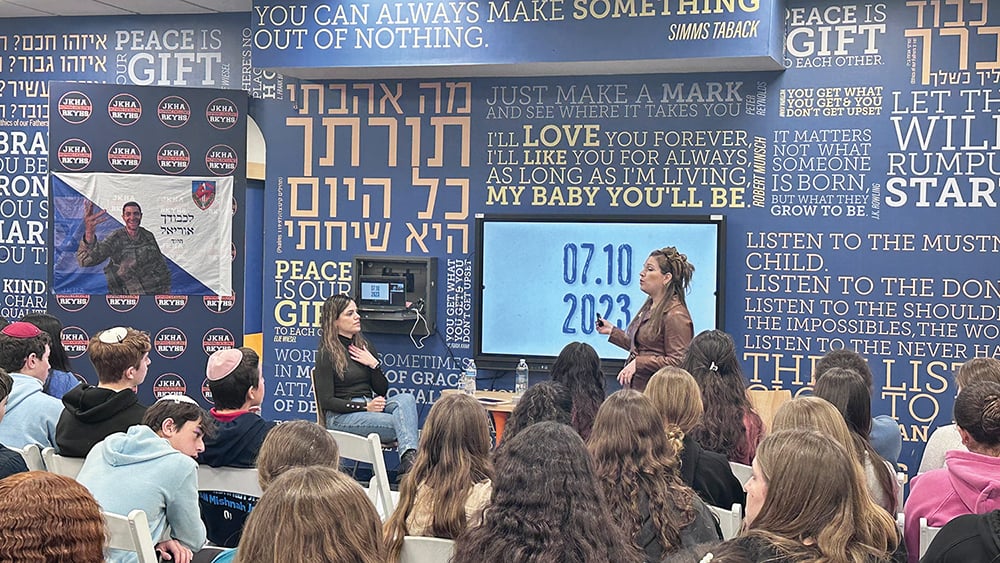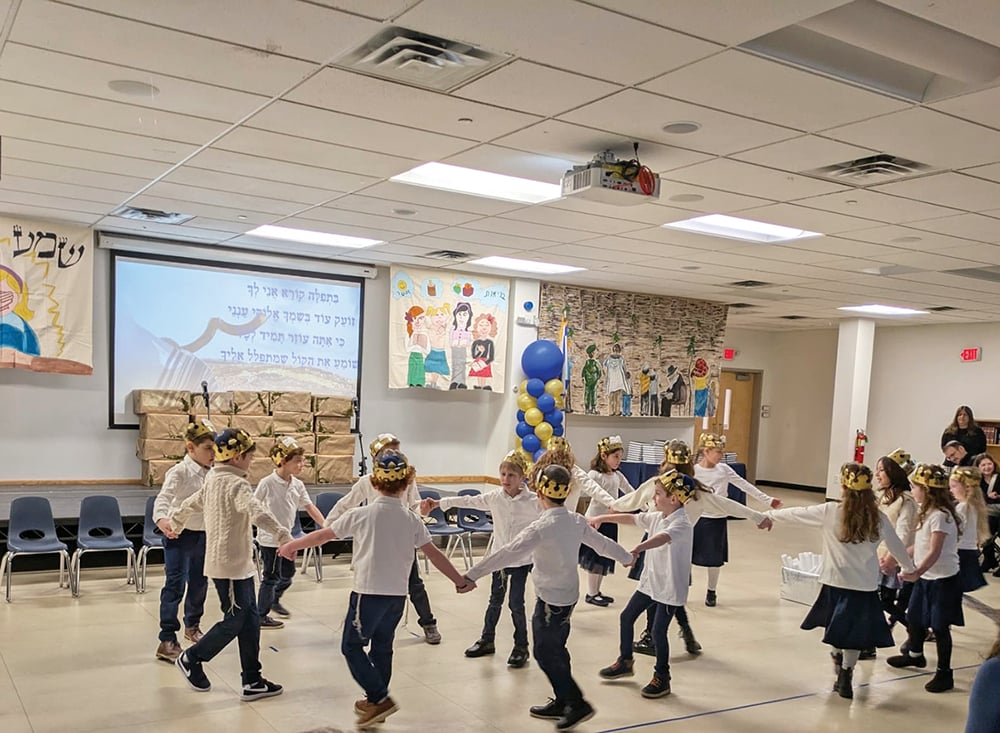By Rabbi Dr. Joshua Waxman
Why did Abaye and Rava spend so much time arguing about Halacha, bringing proofs from Mishnayot and braytot, and reinterpreting their opponent’s sources? Couldn’t they simply have stated their individual positions, and then appealed to the decisive principle that the halacha is like Abaye in יע”ל כג”ם and like Rava otherwise? Indeed, when disputing the yud of the mnemonic in Bava Metzia, Rava should have simply abandoned any hope of prevailing. Perhaps he didn’t yet know?1 All kidding aside, what does it mean when the Gemara states that the halacha is like Abaye in ya’al kegam? How was this decided?
First, let’s review the six to eight cases to identify a common theme. (A) יאוש שלא מדעת is whether the certain eventual abandonment of hope of recovery, when he discovers its loss, takes effect even before. Abaye says it doesn’t. The fourth-generation pair argue it out, with proofs and counterproofs, and in Bava Metzia 22b, the Gemara declares that the last proof was conclusive. תיובתא דרבא תיובתא. Then it declared the mnemonic, והלכתא כוותיה דאביי ביע»ל קג»ם.
(B) In Sanhedrin 27a, a conspiring witness, עד זומם, is invalidated, but what if he’s testified between his initial testimony and the court’s finding that he conspired? Abaye rules that he’s invalid retroactively, and Rava disagrees. Perhaps significantly since it places Abaye on stronger footing, one version (איכא דאמרי) says that fundamentally, Rava agrees with Abaye but pragmatic considerations of monetary loss for purchasers guide him to practically validate the fellow in the interim nonetheless. Proofs and counterproofs aren’t offered. But fifth and sixth-generation Rav Yirmeyah of Difti, who was a student of Rava, then Rav Pappa and Rav Pappi, issued a practical ruling like Rava. Meanwhile, seventh-generation Mar bar Rav Ashi said that the halacha is like Abaye. Then, the Gemara (presumably) states והלכתא כוותיה דאביי ביע»ל קג»ם.
(C1) In Eruvin 15a, regarding לֶחִי הָעוֹמֵד מֵאֵילָיו, a side post which stands by itself, and was not expressly placed to permit carrying on Shabbat, Abaye validates, against Rava. The Gemara (rather than the pair) unsuccessfully attempts two proofs from braytot. Finally, it cites an incident in which first-generation Rav takes a position (against Rav Huna who suggested otherwise), aligned with Abaye. While the Gemara explicitly states הלכתא כאביי or invoke ya’al kegam, Rashi does.
(C2) In discussing ya’al kegam on the letter kuf, Tosafot (Kidushin 52a) note that Rabbeinu Tam and Chachmei Narvona identify a different lamed. Rabbeinu Tam says that refers to Niddah 37a, where Abaye says that a birth doesn’t negate seven clean days but doesn’t count towards the seven, while Rava says it also counts. They debate back and forth, and I don’t see a definitive conclusion.
(C3) The Chachmei Narvona maintain the lamed refers to Pesachim 25b, where Abaye says one is permitted to derive benefit which comes to him against his will, while Rava forbids. According to the first language of the Gemara, they debate where it is אֶפְשָׁר וְלָא מִיכַּוֵּין, it is possible to avoid but he didn’t intent. In the Gemara’s second version, they debate by לָא אֶפְשָׁר וְקָא מִיכַּוֵּין, it is unavoidable but he intends. They offer proofs back and forth but there doesn’t seem to be a definitive conclusion.
(D) The kuf is kiddushin, betrothal, which is not given over to physical consummation—for instance, he betrothed one of two sisters but didn’t specify which—Abaye says it’s a valid betrothal and Rava argues. The Gemara puts arguments into Abaye and Rava’s mouths, and offers its own proofs. Finally, a proof from a brayta taught by Tavyumi forms conclusive proof against Rava, תְּיוּבְתָּא דְרָבָא, תְּיוּבְתָּא. And the Gemara continues regarding ya’al kegam.
(E) The gimel is our sugya in Gittin 34a. Giddul bar Re’ilai sent a get via agent. The wife was weaving and said, “go away and come back tomorrow.” Upon hearing this Giddul said “Hatov ve’hameitiv, Blessed is He Who is good and does good,” revealing that he didn’t want the get delivered. Abaye said that this language doesn’t nullify the get, while Rava said it does. The Talmudic Narrator reads into their dispute that they argue about גִּלּוּי דַעְתָּא בְּגִיטָּא, where Abaye holds that revelation of intent isn’t considered significant. Abaye and Rava either expressly say, or would have said, various proofs and interpretations to each other. At the end of the sugya, a practical incident is labeled as subject to the dispute of Abaye and Rava, פְּלוּגְתָּא דְּאַבָּיֵי וְרָבָא. Juxtaposing this statement, the Gemara states וְהִלְכְתָא כְּנַחְמָן; וְהִלְכְתָא כְּנַחְמָן; וְהִלְכְתָא כְּנַחְמָנִי. Abaye’s true name was Nachmani, like his grandfather. The Gemara thus effectively says hilcheta keAbbaye,2 but doesn’t mention ya’al kegam.
(F) Back to Sanhedrin 27a, מומר אוכל נבילות להכעיס, an apostate who eats non-kosher meat due not due to appetite but to express insolence, Abaye says he’s an invalid witness; Rava disagrees. declares him valid. The Gemara brings proofs and interpretations, feels it has successfully proved Abaye’s side, so concludes והלכתא כוותיה דאביי. It doesn’t mention ya’al kegam, but recall that it’s mentioned immediately prior.
Abaye’s wins against Rava sometimes aren’t reckoned in ya’al kegam. For instance, Tosafot (in Kiddushin, ibid) wonder why Abaye and Rava, each citing Rabba in Bava Metzia 36a, isn’t reckoned. It doesn’t say והלכתא כוותיה דאביי but does in the She’iltot, and in 42a, the halacha’s indeed like Abaye. Tosafot answer that Savoraic conclusions aren’t counted. I’d note that other instances will have other Amoraim weighing in, in which case it isn’t purely Abaye and Rava.
So, what does it mean that the halacha is like Abaye? And then, why specifically in ya’al kegam? Some possibilities:
(a) They each brought proofs and either Abaye or Rava prevailed on the merits. Abaye won in ya’al kegam. See A, C1, D, and F. But what about the other examples?
(b) They stated their positions and evidence. Later generations of Amoraim voted. Those who agreed with Rava typically outnumbered those who agreed with Abaye, other than ya’al kegam. As Rav Schachter put it, it wasn’t precisely like Congress, with Democrats or Republicans in the majority and always voting along party lines. Rather, they weighed evidence in each case. So it was on the merits, but empowered by majority decision. These could be decisions among later Amoraim—see Tosafot above about excluding Savoraim. What about B?
(c) There’s a cute explanation of Bava Batra 22a which Rav Schachter cites, where Rav Ada bar Ahava II tempts students in Abaye’s yeshiva in Pumbedita, saying אַדִּמְגָרְמִיתוּ גַּרְמֵי בֵּי אַבָּיֵי תּוּ אִכְלוּ בִּישְׂרָא שַׁמִּינָא בֵּי רָבָא, “instead of gnawing dry bones in Abaye’s academy, eat juicy meat in Rava’s academy.” The gematria of גַּרְמֵי is ya’al kegam, because the yud, gimel, and mem are shared, and resh(200) = ayin(70) + lamed(30) + kuf(100). This places the conclusions within Abaye and Rava’s lifetimes. This doesn’t work with B or arguments placed into Rava/Abaye’s mouths.
(d) Perhaps these later Amoraim indeed voted along party lines, but it wasn’t political. Pirkei Avot 1:1 has the men of the Great Assembly say וְהַעֲמִידוּ תַלְמִידִים הַרְבֵּה. Mechoza was more popular than Pumbedita. Rava’s student was Rav Pappa and Ravina I, and Rav Pappa’s student was Rav Ashi. As part of their adopted worldview, as axioms in understanding Torah, they may have simply adopted the Rava position, and so they outnumbered those maintaining Abaye positions in most instances, but would still entertain Abaye and sometimes rule like him.
(e) A variation of the above, instead of history being written by the victors, those who write history establish themselves as the victors. Ravina and Rav Ashi redacted the Gemara and would have encoded how they each held. Or the redactors after Mar bar Rav Ashi, for B. That doesn’t preclude other late Amoraim for holding otherwise; we just don’t see it.
(f) Related, hilcheta statements may all be Savoraic or Geonic, like Tosafot’s example above. We see extra וְהִלְכְתָא statements added by Rif; perhaps they were also added in the Geonic era. These could reflect local opinions. Consider Rosh on Gittin 18a, with וְהִלְכְתָא: מִשְּׁעַת כְּתִיבָה, like three Amoraim against the two who say מִשְּׁעַת נְתִינָה. Among manuscripts, Munich 95, Firkowitz 187, and Girona have מִשְּׁעַת כְּתִיבָה, but Arras 889, Vatican 130 and Vatican 140 have וְהִלְכְתָא: מִשְּׁעַת נְתִינָה. Rosh omits וְהִלְכְתָא and notes local practice, and Vatican 130 only has וְהִלְכְתָא as a marginal gloss.
I’d suggest that unattributed וְהִלְכְתָא statements aren’t intrinsically halachically binding, if post-Talmudic.3 Further, and separately, I’d suggest והלכתא כוותיה דאביי ביע»ל קג»ם isn’t a binding halachic principle directed at posekim. It involves a mnemonic, which are mostly post-Talmudic. Even until the 10th-century, the Talmud was (also) transmitted orally. It’s a masoretic note, an instruction to the Garsan (Reciter) as to where to place these explicit וְהִלְכְתָא for Abaye. But, that doesn’t mean that we mustn’t rule like Abaye elsewhere, and that where the Gemara doesn’t declare for Abaye or Rava, Rava wins.
Rabbi Dr. Joshua Waxman teaches computer science at Stern College for Women, and his research includes programmatically finding scholars and scholastic relationships in the Babylonian Talmud.
1 Let’s take the joke a bit too far. According to Rava, יאוש שלא מדעת הוי יאוש. Since he’d abandon hope had he known of his eventual loss, it should count as a loss. On the other hand, יע”ל כג”ם is a Talmudic siman, and as Bava Metzia 21a establishes, in a matter that has a siman, all agree that it is not reckoned as יאוש.
2 Though Firkowitz 187 has: והילכת’ כ[רב]נחמן והילכ.. כאביי דאמ’ הילכתא כר’ בשתים והילכת’ כנחמן והילכת’ כאביי נ”א כנחמני. This text is incorrect because, in the first instance of Abaye, it isn’t Abaye for Rav Nachman who says the halacha is like Rabbi in both. Regardless, the last instance has Abaye, which it notes other girsaot have “like Nachmani.”
3 Rashi in fact argues against one, in Beitza 33a, since the sugya was working aligned with the students of Rav.












